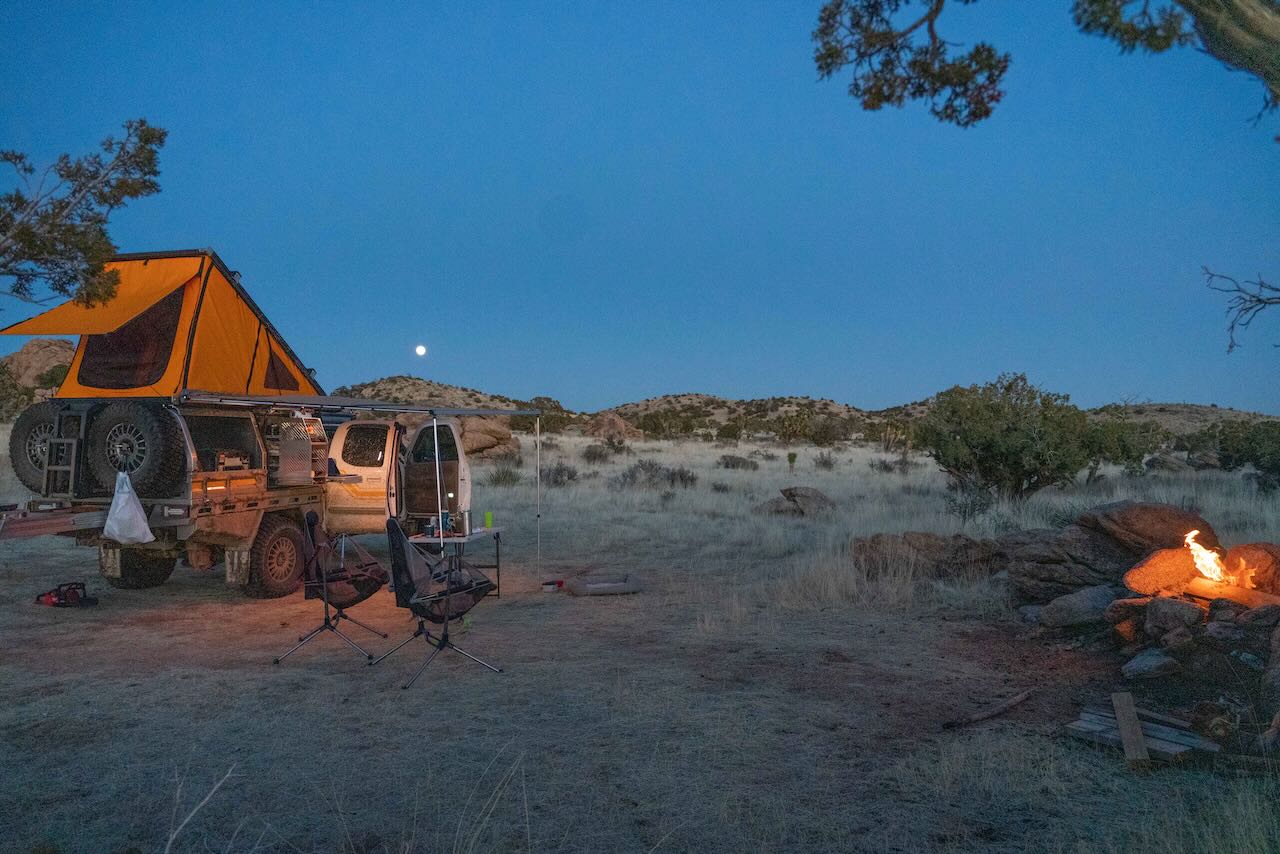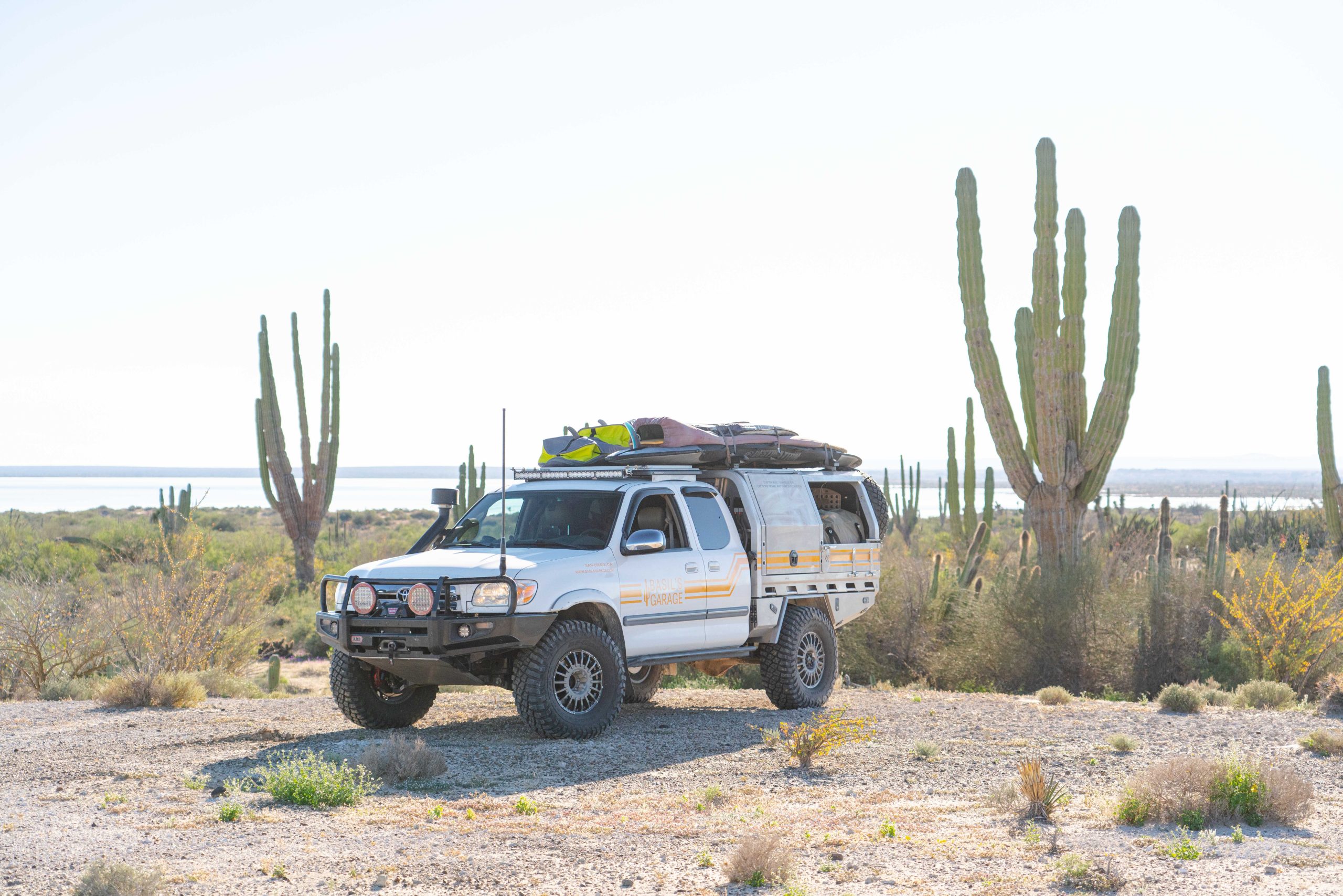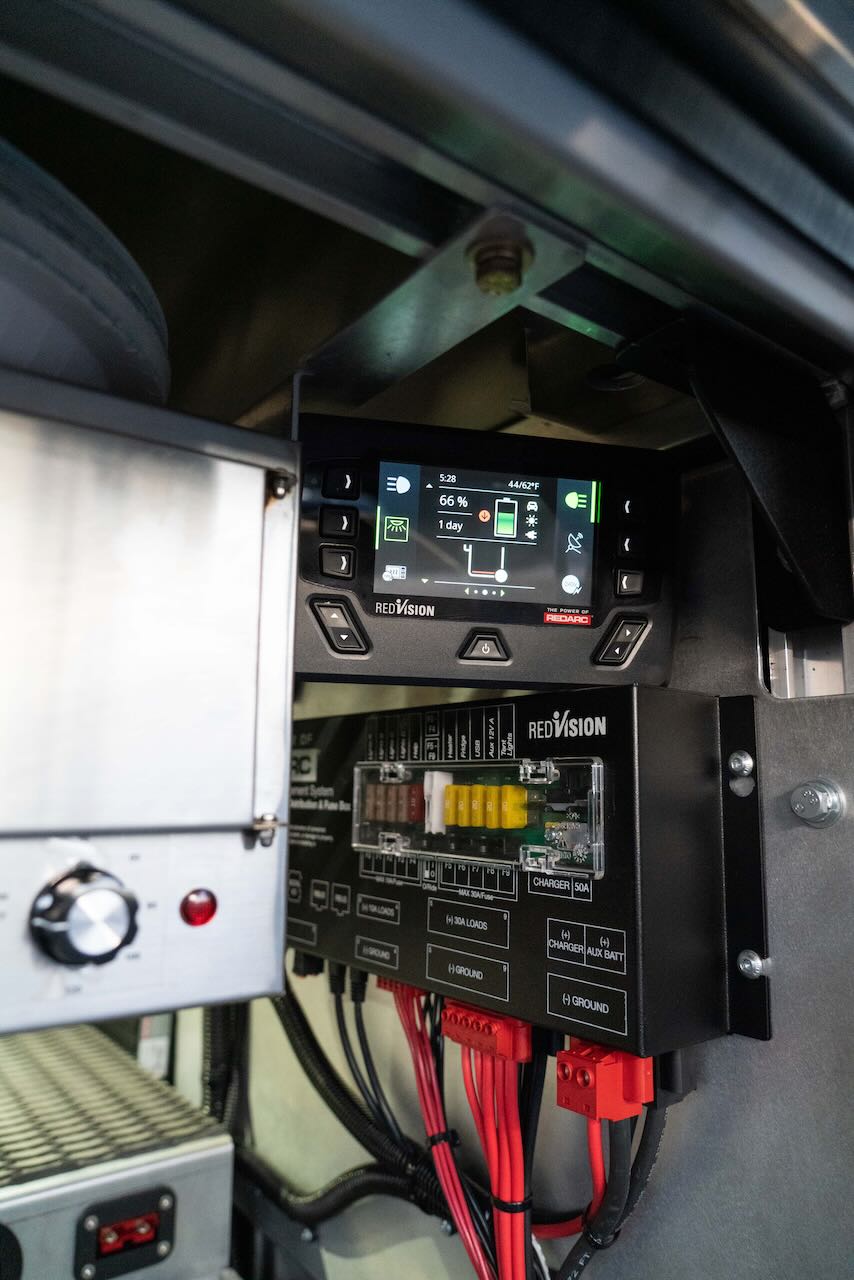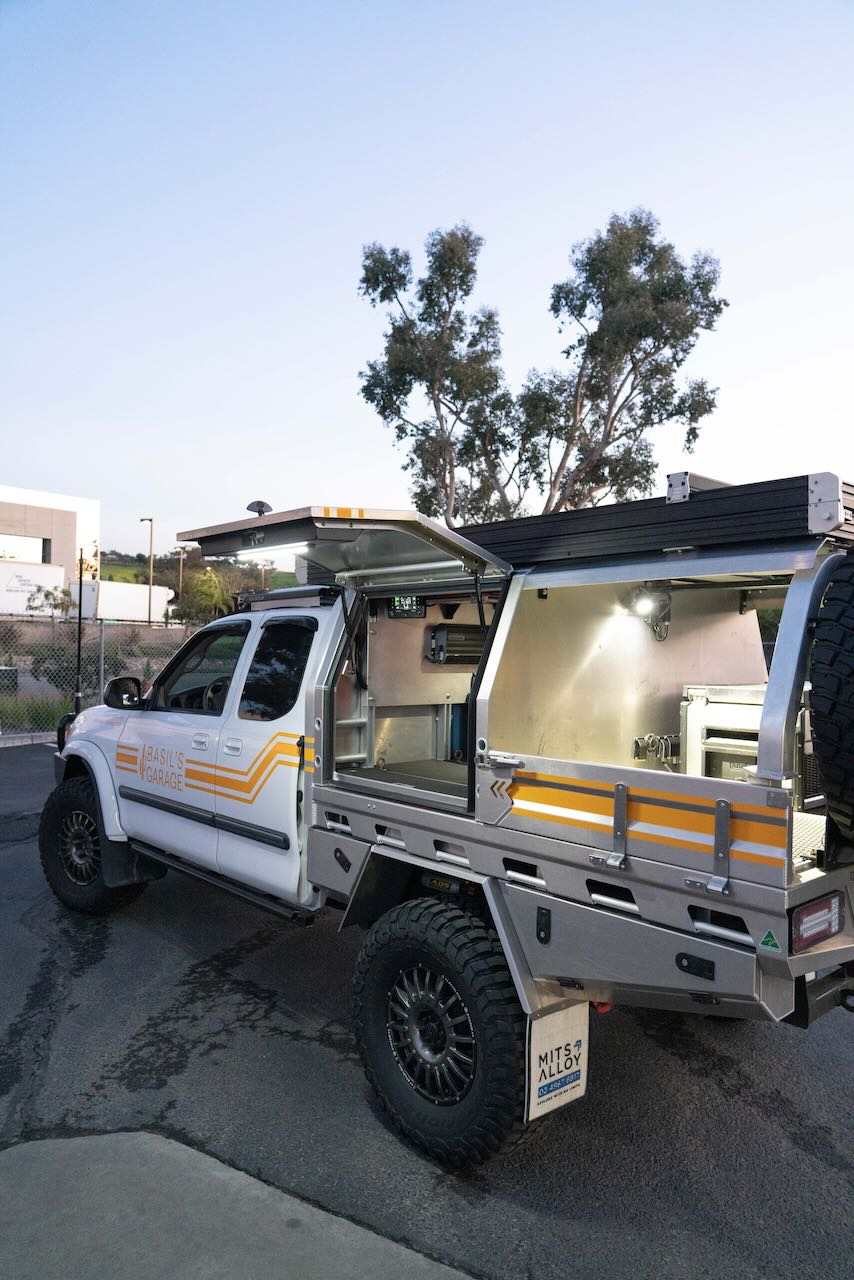Photos: Basil Lynch
The first generation Tundra marked a turning point in Toyota’s evolution as an automobile manufacturer. In fact, you could say that when this North America-only full-size truck hit the market in 1999, Toyota was actively reinventing itself. In the process, it permanently altered the landscape for big pickups in the US.
Although the Tundra wasn’t Toyota’s first full-size truck—the short-lived T100 holds that distinction—it was the first full-size truck built in North America by a Japanese manufacturer. The original 3.4-liter V6 and the available 4.7-liter 2UZ-FE V8 didn’t exactly set the world on fire with huge power ratings (they also lagged behind the pack in towing and payload). Still, those motors made up for the lack of sheer grunt with technology, refinement, and fuel economy. Where the Tundra revolutionized the full-size market was in ride and driver comfort. Its car-like interior looked and felt positively space-age compared to the domestic competition. It steered and rode in a way that felt familiar for drivers used to sedans or small SUVs. An optional step-side bed added a bit of flair to the platform, a departure from Toyota’s normally staid design language.

The result was a record for single-model initial vehicle sales for Toyota, Motor Trend’s Truck of the Year honors in 2000, and Consumer Reports Best Full-Size Truck award. The Tundra pushed the Big Three to reconsider their approach to building pickups. No longer could they treat their customers like rubes, coasting along with subpar fit and finish and interior design and materials stuck in the 1980s. Almost overnight, Toyota took 100,000-unit bites out of the yearly market that Chevy, Ford, and Dodge had dominated for decades. If they wanted to stay relevant, they would have to take notes from Toyota—at the time, a wild thing to consider. There was no question: the Big T had reinvented the full-size truck.
* * *
Basil Lynch knows a thing or two about reinvention as well. He put together his first overland vehicle to support his career as an adventure photographer, where his work often took him to remote locations. Self-sufficiency was the guiding principle when Basil built his 2007 FJ Cruiser, and his talents behind the lens quickly made his first Toyota an Instagram star. When he made the jump to live less at home in Southern California and more on the road, he went big with a 2000 Ford F250 diesel with a custom camper on the back, affectionately known as “Bruce.” He wrote for Expedition Portal in 2017 about the switch, saying,
The FJ was able to take me to some very unique locations, but the full size [of the Ford] will help me stay on the road longer and be more comfortable while doing so. If you have the option, I’d say go full size with your next overland vehicle—you won’t regret it.
He was at the vanguard of a movement away from smaller overland platforms and into full-size trucks that continues to this day. But Bruce didn’t stick around forever, as Basil launched into the next stage of his journey in the overland world.
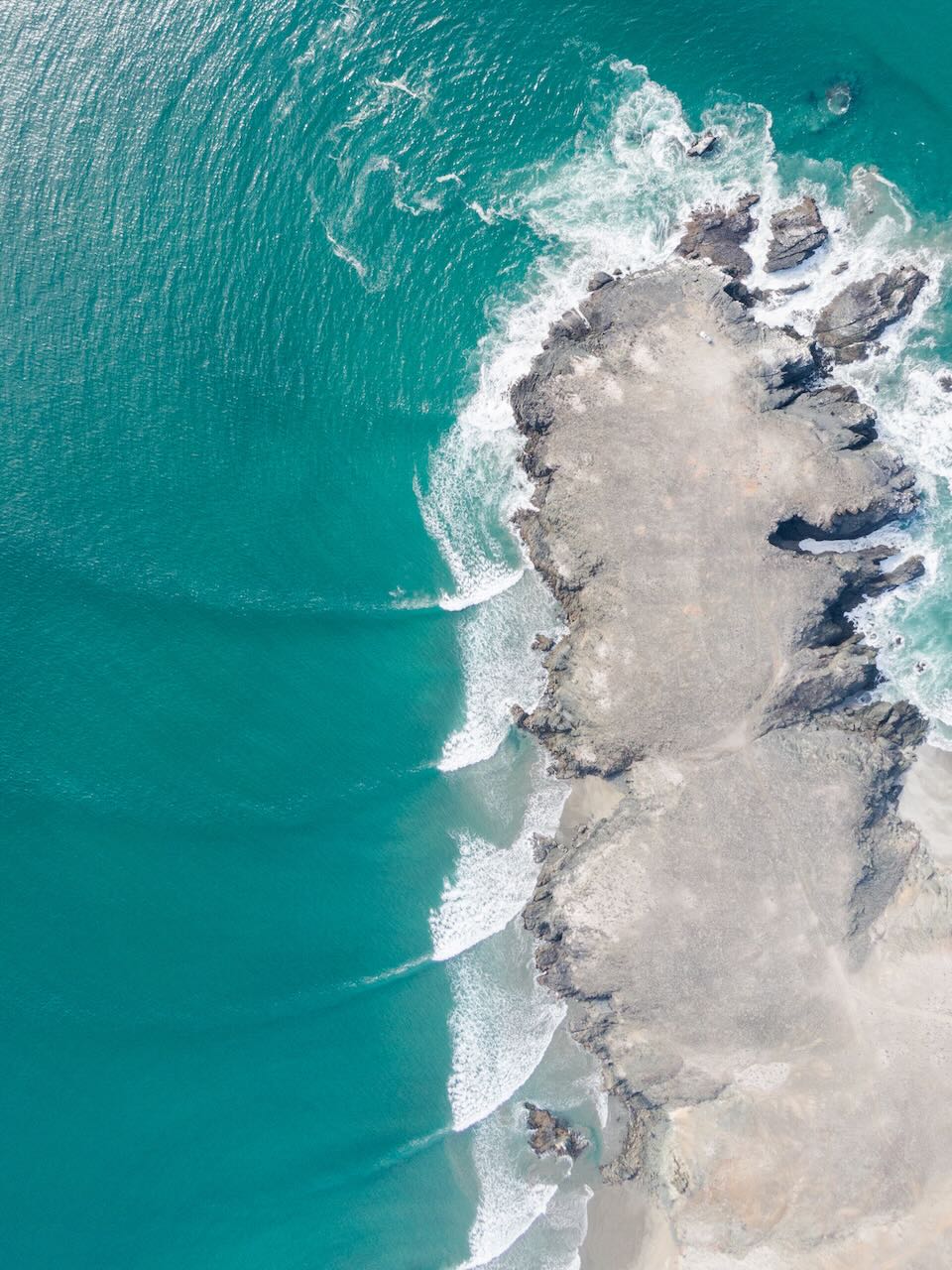
One constant in Basil’s life since the beginning has been surfing. The call of the swells has motivated his love for travel, chasing waves all over North America, and living and carving lines in Baja for three months. His overland builds have always had a surf focus, even as he worked his day job in photography, often far from any breaks. Over the years, he learned exactly what makes a great surf vehicle, especially for accessing beaches off the beaten track and living off-grid for extended periods. After thousands and thousands of miles behind the wheel of surf-centric 4x4s, Basil decided it was time to share that knowledge with the rest of the adventure travel community.
Thus, in 2021 Basil’s Garage was born. Located in San Diego, the shop’s modest work bays pour forth a succession of custom-built Toyotas designed for endless summers. The bedrock of these builds is durability—a vehicle that will allow the owner to pursue the best breaks in the most secluded spots for many years without worry (hence, the focus on Toyotas), which brings us back to the first-generation Tundra.
* * *
The showcase shop vehicle at Basil’s Garage is a 2005 Toyota Tundra Limited. This Access Cab first-gen has 130,000 miles on its original 2UZ V8, but that’s where the originality ends. Nearly every nut and bolt on the rest of the truck has been replaced, custom-built, or otherwise upgraded in the pursuit of the ideal surf ship. The most obvious modification is the MITS Alloy tray and modular camper structure from Australia, which features many specially made changes and tweaks to fit Basil’s vision.
The first-gen Tundra is surprisingly capable off-road in its original form, but aftermarket support for this truck is awfully thin, even compared to its contemporary stablemate, the Tacoma. So, why an early Tundra? Basil points out a handful of factors.
I picked the Tundra as a platform because I wanted a vehicle that would be solid with weight on it. Initially, it was with a flatbed camper, so I expected it to live most of its life with 1,000 pounds [or more] strapped to the back. The Access Cab first-gen Tundra is nearly the same size as a Tacoma but has a V8 powerplant. The driveability of the truck is much better than a Tacoma when loaded down. I can still cruise at 75-80 mph for hours without getting bogged down on hills.
With a robust frame and a stout engine as a foundation, Basil could turn his attention to recovery equipment and armor. There are no readily available winch bumpers for first-gen Tundras, so the team at Basil’s Garage modified an ARB unit meant for a Tacoma, and equipped it with a Warn Zeon 10 winch wound with Master Pull synthetic line. A host of custom skid plates and White Knuckle rock sliders round out the under-body protection, and auxiliary lighting from Baja Designs and ARB illuminate the darkest rural roads.
The most comprehensive aspects of this build are the suspension and driveline. Beach routes in Baja are rutted, riddled with washboard, and generally very abusive for factory springs and dampers. Neither a rock crawler nor a Pre-Runner, Basil designed these systems to endure long hours at high speeds over broken terrain while ensuring driver and passenger comfort and dynamic stability.
Every component—from the shock towers to the lug nuts—was upgraded, reinforced, or modified. Riding on Arizona Desert Racing 2.5-inch coilovers and shocks, the dampers are paired with 700-pound springs up front and custom 2,500-pound leaf packs from Alcan in the rear. Upper control arms and active bumpstops (front and rear) from Speciality Control and lower control arms from Solo Motorsports keep the geometry in line. At the same time, power is routed to the custom Braid wheels and 33-inch BFG rubber through a bespoke Oceanside Driveline rear drive shaft, CVJ high-angle front CV axles, and a fully custom-built East Coast Gear Supply Dana 60 rear axle.
Riding atop that beefy Dana and the boxed and welded frame is the modular MITS Alloy habitat, which includes two main compartments, one for storage and living space and the other which houses the electrical systems as well as the camp kitchen. Stuffed to the gills with Redarc componentry and 300ah of lithium battery power, Basil stays connected via a Starlink satellite internet connection modified to run on 12 volts and keeps his beverages cool with an ARB Elements lockable fridge/freezer. An induction cooktop completes the kitchen, and small but intelligent touches abound in easy-to-access storage, a sizeable under-tray drawer, and custom-designed canvas side covers.
The Tundra is also awash in surfer-friendly modifications. These include that colossal battery bank charged primarily from the alternator, eschewing fixed solar panels on the roof (that’s where surfboards go); a 24-gallon auxiliary fuel tank for long safaris between fill-ups; 30 liters of fresh water in a convenient MITS Alloy headboard tank for rinsing down surfers and dogs; a Go Fast Campers V2 XL pass-through rooftop tent that opens into the canopy making a weather-resistant living space you can stand up in on stormy days; a gusseted chassis that’s been entirely stripped and re-coated inside and out to resist corrosion in saltwater environments (early Tundras are prone to the tin worm); and a 12-volt camp oven for baking fresh cookies after a long day of paddling and riding the waves.
* * *
Basil’s truck may be the most thoughtful and thoroughly reworked first-gen Tundra currently turning wheels off the pavement anywhere, and he claims, “the truck [is] something that will be with me forever.” We’ll see about that—if we know one thing from Basil’s history, he’s remarkably adept at reinventing himself.
Even in this lengthy feature, we’ve left aside many in the extended list of upgrades and modifications, more of which are detailed below in the spec sheet. I also highly recommend watching a walkthrough video on the Basil’s Garage YouTube channel for even more information and inspiration on this incredible build.
Finally, if you’re traveling to Overland Expo West May 19-21, Basil and his Tundra will be featured in the Redarc booth in the exhibitor area. I know I am looking forward to seeing this impressive surf truck in the metal.
Specifications
- 2005 Toyota Tundra Limited with custom MITS Alloy tray and camper
Power
- Factory 4.7-liter V8 engine
- Custom side exit exhaust with Magnaflow muffler
- 5-speed automatic transmission
- FJ Cruiser transfer case with twin stick modification
Suspension and Drive
- Custom Oceanside Driveline rear drive shaft
- CVJ high-angle front CV axles
- Custom-built East Coast Gear Supply Dana 60 rear axle
- Arizona Desert Racing 2.5-inch coilovers
- Speciality Control products upper control arms
- Solo Motorsports factory length lower control arms
- Speciality Control products long travel hydraulic bump stops
- Powerbrake big brake kit with upgraded pads
Recovery and Armor
- Modified Tacoma ARB front bumper
- Warn Zeon 10 winch with Master Pull synthetic line
- Custom rear hitch
- White Knuckle off-road rock sliders
- Custom aluminum front skid plate
- Custom twin spare tire mounts
Accessories
- 100 Series Land Cruiser snorkel
- Custom aluminum 24-gallon auxiliary fuel cell
- ARB Twin air compressor and locker manifolds
- MITS Alloy custom tray and camper
- MITS Alloy 30-liter headboard water tank
- Go Fast Campers V2 pass through XL Roof Top Tent
- ARB Awning
Electrical and Lights
- Custom Off-Grid Engineering dual battery system
- Redarc Revision system w/ 3x screens
- Redarc Manager 30
- Redarc 3,000-watt inverter
- ReliOn 300 amp-hour low-temp lithium battery
- 1,500-watt induction cooktop
- Starlink 12-volt satellite internet
- 12-volt camp oven
- ARB Elements fridge/freezer
- Baja Designs 40-inch ONX6+ light bar
- Baja Designs Squadron SAE fog lights
- Baja Designs rock lights
- ARB Intensity V2 LED driving lights
Resources
Basil’s Garage: basilsgarage.com
Instagram: instagram.com/basilsgarage
Basil Lynch: basillynch.com
Our No Compromise Clause: We carefully screen all contributors to ensure they are independent and impartial. We never have and never will accept advertorial, and we do not allow advertising to influence our product or destination reviews.




